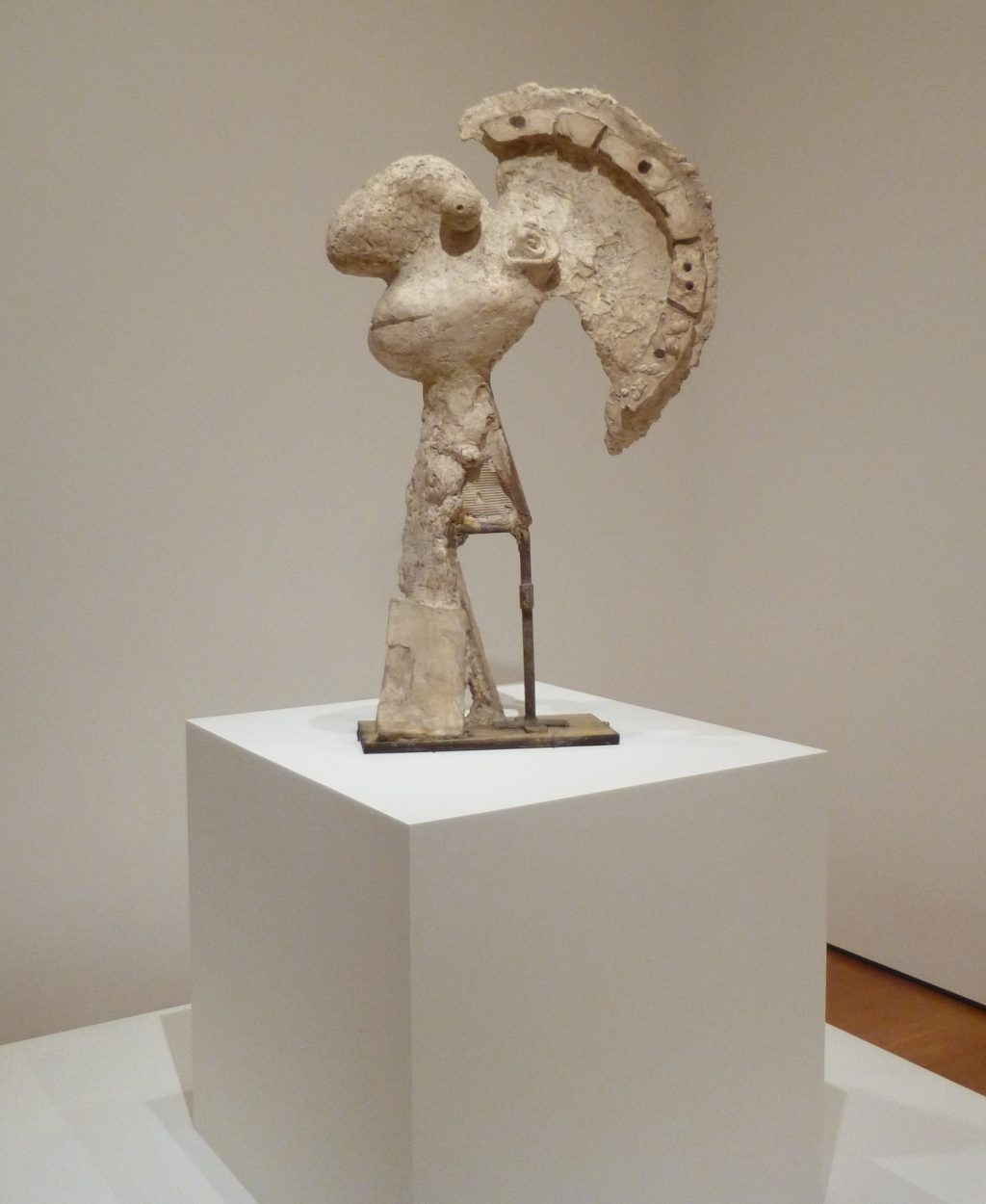As a regular museum-goer, I usually like to visit small museums and hidden gems that are unknown to most of the general public. However, this month I could not avoid the temptation to see the Picasso Sculpture Exhibition at the Museum of Modern Art in New York City. This exhibition is a once in a lifetime opportunity, as 141 of Picasso’s sculptures are being exhibited in the United States for the first time in half a century. In total, there are eleven galleries dedicated to the artist’s early cubist years, his monument to Apollinaire, works made in the Boisgeloup sculpture studio, works made during the war years, Vallauris ceramics and assemblages, and sheet metal sculptures. The exhibition reveals Picasso’s radical innovations in the field of sculpture through his humor, wit, and masterful use of various new materials.
Picasso was taught to paint from a young age because his father was also a painter. The artist started to experiment with sculpture much later in his life using tools from his friends’ studio spaces. Interestingly, one of the craftsmen Picasso learned from even declared that he would fire Picasso if he were actually his apprentice due to his creative and impulsive style. Because of Picasso’s background in painting, he would often mix paints with bronze, which can be seen in his six piece series, Glass of Absinthe. Each sculpture contains a slightly different absinthe spoon with varying painted patterns that Picasso found. This exhibition at the MoMA marks the first time each of these six works have been together since they were in Picasso’s studio. Within these particular sculptures, Picasso incorporates humor by making the liquid contents of the cup a solid bronze sculpture and painting the glass, which is normally clear.
Some of Picasso’s most famous sculptures at the exhibition are his Guitars. The original Guitar, which he created in 1913, is made of paperboard, paper, thread, string, twine, and coated wire. In this work, Picasso introduces negative space using craft processes such as cutting, folding, and threading. The other two Guitars, made in 1914 and 1924, are made of sheet metal and wire followed by painted sheet metal, painted tin box, and iron wire. In his last Guitar, Picasso reveals a sense of playfulness by introducing wrinkled and flat metal and mixing materials, giving depth to a piece of art hung on the wall. Because the sculpture incorporates paint and is hung on a wall, one may question whether it is a sculpture, a painting, or both.
Picasso’s use of a variety of materials reveals that he was a scavenger and a hoarder. There was a junk yard in Vallauris between the artist’s apartment and studio where Picasso often found spare materials for his sculptures. His She-Goat, for example, is made of a wicker basket for the ribs and ceramic fragments in the utter. Despite how random the materials seem to be, this sculpture looks particularly realistic in person. Amusingly, Picasso used to tether his pet goat to this sculpture which he kept in his yard. In another work titled Head of a Warrior, Picasso exaggerates the size of the warrior’s eyes by making them out of tennis balls he borrowed from the tennis court on his property. When Picasso had children, his sculptures became even more playful and boyish. For example, Baboon and Young represents Picasso and his son which was made out of his son’s toy cars. Although these everyday items became part of new creation, their identities are interestingly and subtly preserved.
The final gallery of the exhibition displays Picasso’s sheet metal sculptures made between 1954 and 1964. The artist would create a draft by cutting and folding cardboard which were fabricated into sheet metal replicas. He would experiment with perspectives through the contours of metal planes and the painted details. For example, Women with Hat is painted in a vibrant blue and brown color and has varying planes that create a realistic depth. In a year and a half, Picasso made over 120 of these sheet metal sculptures.
Picasso’s innovations in sculpture, just like in painting, influenced generations of artists, and his whimsical motifs can still be seen in contemporary works of sculpture. This exhibition is inspiring for any artist or art enthusiast with an appreciation for the creative use of unique materials and interesting ideas. The exhibition closes on February 7, 2016. Visitors under the age of 16 are free. Don’t miss it!
Lena Yannella
staff writer

